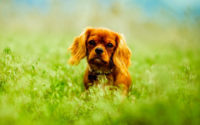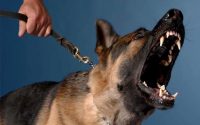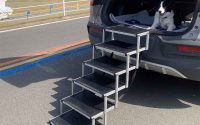The Ideal Home Haircut: How to Get the Groomers’ Look at No Cost
What did you do to my dog? If you have ever said those words perhaps your poodle came out looking more like a hairless Mexican dog than your fluffy pup. How could this happen? What makes a stylist so scissors happy? We can’t know the answer to these questions exactly but there is a way to fix this.
Haircuts at home are what you need and yet if you find yourself wondering “How can I groom my dog myself?” I should begin this by telling you, to cut your dog’s hair is serious business. Yes, it will save you great money in the long run, however, be sure to get the proper training before endeavouring in this, as it’s especially important to gain the trust of your beloved pet.
Once you master this skill, you won’t ever have to search for a groomer and be disappointed. With a little practice and dedication, your best friend will never have to suffer at the groomers’ hands again. Let’s look at some must-have equipment for your new home pet salon and how to use it to count on the best outcome.
Which Type of Clipper to Buy?
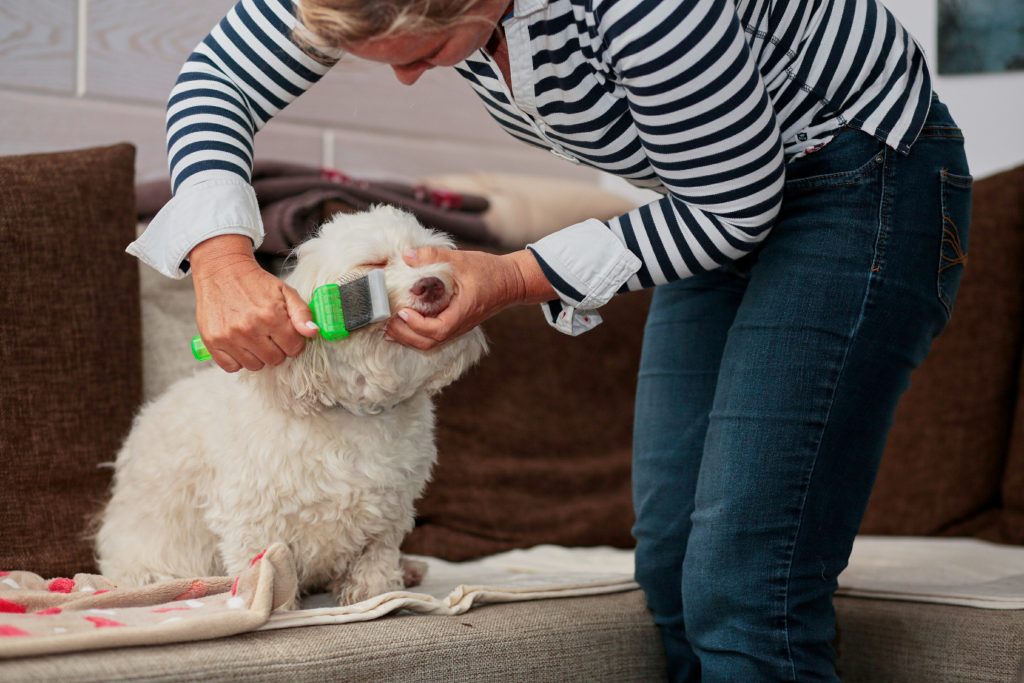
Whether your canine has a thick or thin coat, the right tools are essential. Thankfully the world of clippers is endless, but what truly makes a difference when you have limited time before your furry friend runs away are convenient cordless clippers that give you the flexibility and efficiency minus the cord.
This type allows you to move around without the hassle or fear of strangling your pet with troublesome cords. The cordless clippers can be sold individually or in a packet. In this box, you will typically find Ion batteries, a charging station, blade oil and a blade.
When picking your new cordless hair clippers for your pooch, you want to look for something lightweight. This will allow you to use the clippers with ease and make the best cuts.
Blade lengths vary in range with as long as 2.2 mm to a 0.8 mm cutting length. Your blade can be ceramic or stainless steel. Ceramic is most popular because it tends to stay sharper longer and does not rust. Despite the blade feature, these grooming tools have proven to be a lot safer, easier to use, and more efficient than their simpler counterparts – the scissors.
Tools You Need to Get Started:
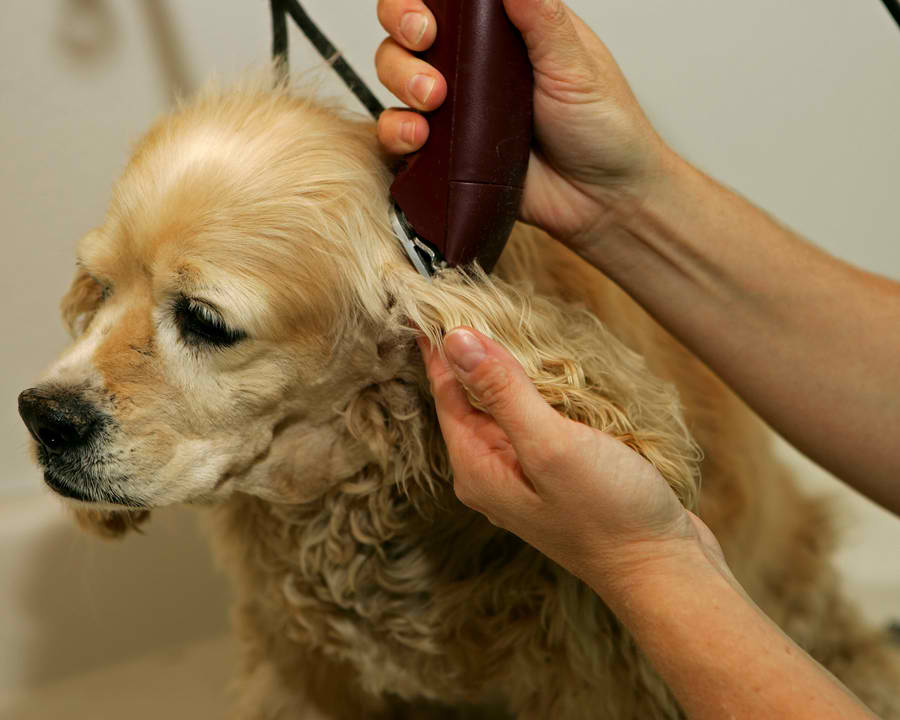
• Clippers and blades – varieties in clipper length are for each different hair length and how close of a cut you want. Having more varieties is especially useful if you have more than one dog with different types of coats.
• Clipper oil – needed to keep the clippers well moist. This ensures they operate as intended with no disruptions. Your clippers should be oiled after every second use or even after each use. Keeping them oiled minimizes the friction that occurs in use.
• Dog brush and bristle brush – While you want to always start cutting hair on a clean dog you also want to comb his fur through. This allows you to find all the knots so they aren’t knotty problems later.
• Flea Comb – A flea comb isn’t like any other comb. They are very small and designed to catch and hold fleas you may find on your litter friends fur. This should be done on dry hair to avoid any tangles. If your dog is suffering from flea infestation, ask your vet for the right medication to treat this.
• Dog towels are another must for drying the fur and prepping it for a perfect cut.
• Oatmeal, flea, tick or any shampoo that fits the needs of your dog’s skin helps to clean it thoroughly for a cut.
How to Cut Hair?
Unlike people, it’s best to cut a dog’s hair clean and dry. So, start with a good thorough brush through. If they have short hair, you will want to use a bristle brush. If they have long hair, you may need to use a comb or slicker brush. Once you’re done, you can move to the next steps: bathing and drying. If you have the time, air drying is always an easy option with no work.
It’s important to keep in mind dogs are a little like kids. The slightest noise and they jump to see what it is. This can be a problem while cutting their hair, as you want to have a calm dog. Be sure to set up your home groom station away from any distractions as you need your pup’s full attention to get the most out of the cordless clippers and prevent any painful accidents.
In terms of cutting itself, never cut without a guard, since it’s crucial for protecting yourself and the dog. You are to keep the blade flat against your dog’s body and to cut in the direction their fur grows. Always start on their back going toward their tail, then move on to the rest of their body.
To cut the legs, start at the hips and move down toward the feet. To cut around more delicate areas, like the face and eyes, be sure to switch to scissors. This may make the dog more comfortable in such areas. Don’t forget to reward your furry friend along the way with treats if he or she is doing great behaviour-wise with you stepping in as the groomer.
How to Maintain Your Dog’s Fur?
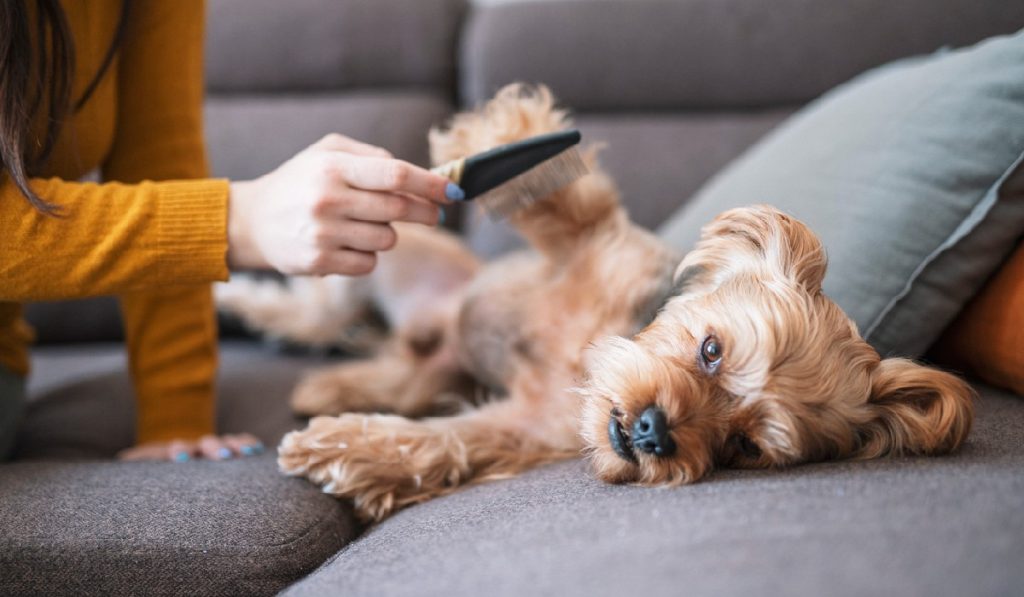
No one loves the smell of a dirty dog. While you don’t want to bathe and clip your dog too often, you still want to keep him clean. Between 4-8 weeks is the ideal time to wash your dog and trim their fur no matter if it’s shorter or longer. Brushing can be done more often and is a welcome practice every couple of days as it removes all the knots and debris that may form.

